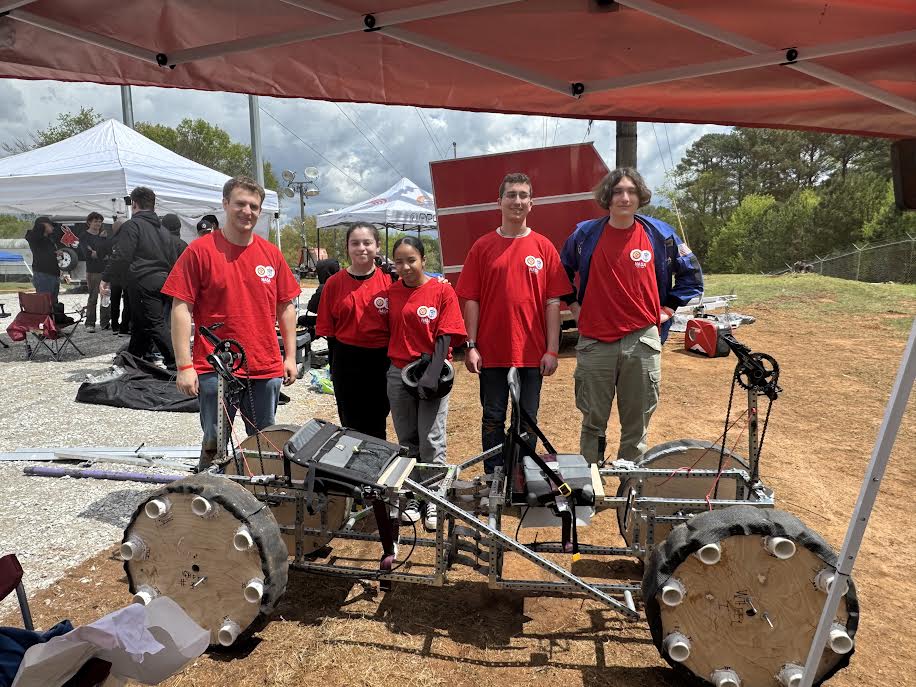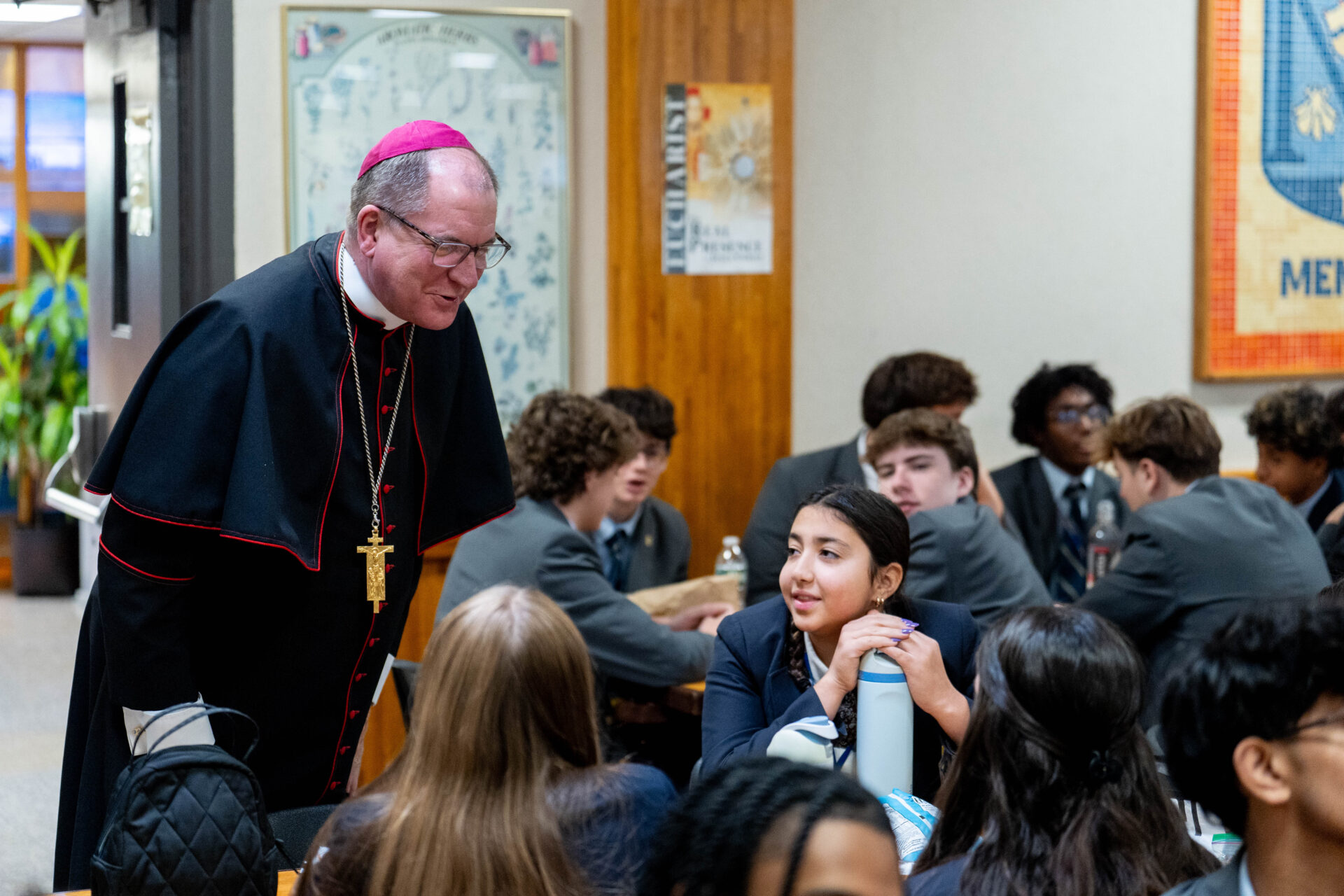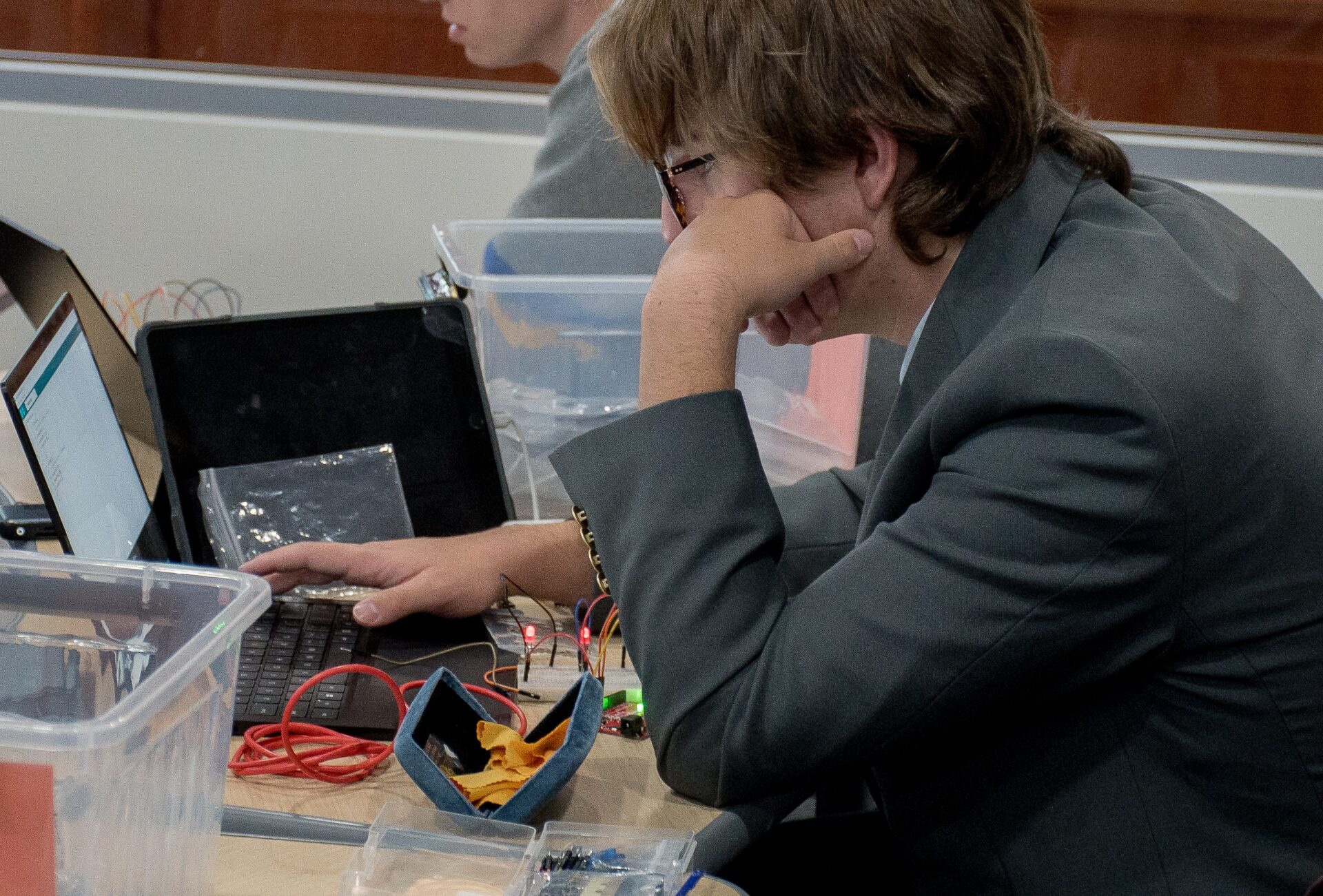Article by Phoenix writer Molly Driscoll ’26:
Seniors Isabel Larrea and Kaitlin Lopez represented the Blue and Gold at Huntsville, Alabama on April 11 and 12 to take on national and international competitors at the NASA Human Exploration Rover Challenge, or HERC.
Since 1994, this challenge, formerly known as the Great Moonbuggy Race, has pitted the best high school science students against each other.
The objective of the HERC challenge is for students to design, build, and test human powered rovers capable of getting through an approximately half-mile course that includes a simulated field. This simulated field contains obstacles an astronaut might encounter on the Moon like asteroid debris, boulders, erosion ruts, crevasses, and an ancient streambed.
The goal is to complete the course in under eight minutes, which is equal to the oxygen supply during the Apollo 14 mission.
Since there must be one male and one female in each vehicle, Chaminade partnered with Kellenberg. The students built the rover at Chaminade High School over several months.
Two students, sitting back-to-back and strapped into their seats, pedaled the vehicle, pulling a lever to steer. The students’s rover passed inspection, and they succeeded in getting the rover on the track and moving it around the obstacles as they pedaled by the lake.
KMHS science teacher Mrs. Carman remarked, “The students worked together to solve engineering challenges as they arose over the course of three days. They showed drive and determination, always wanting to improve some aspect of the rover. From building steering mechanisms to brakes, these five would not quit.”
Fifteen different countries attended this challenge: Bolivia, Dominican Republic, United States, United Arab Emirates, Puerto Rico, India, Bangladesh, Turkey, Germany, Singapore, Peru, Colombia, Canada, Mexico, and the United Kingdom. Kellenberg and Chaminade fared well despite this daunting and competitive field. They hope to benefit from this experience to improve next year.
The HERC was inspired by the Apollo and Artemis missions. NASA’s early missions to the moon used the Apollo Lunar Roving Vehicle, which allowed astronauts to collect more lunar samples than the two previous missions to the moon combined. Through NASA’s Artemis 15 mission, humankind is returning to the moon in the 21st century with the goal of landing the first woman, first person of color, and first international partner astronaut on the moon. NASA will use innovative technologies to explore more of the Moon than ever before.







